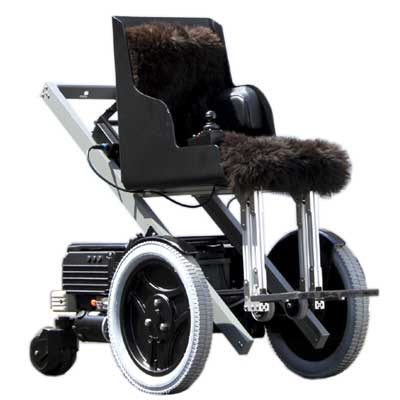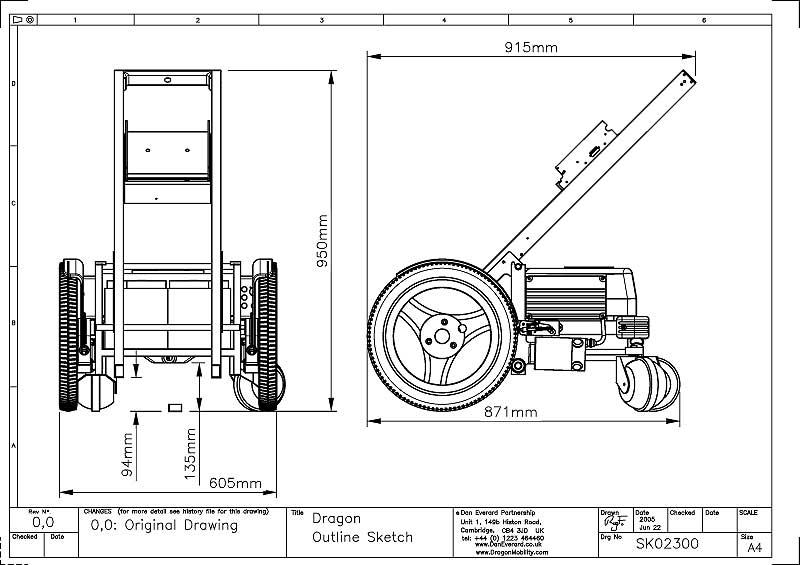|
|
| |||||||||||||||||||||||
|
|
| |||||||||||||||||||||||
 |
||||||||||||||||||||||||
|
|
| |||||||||||||||||||||||
|
|
| |||||||||||||||||||||||
Dragon :: technical specification (Raked Elevator)* | ||||||
| ||||||
physical dimensions (see drawing and notes at bottom of page):
Actual size of seat affects the figures below :drive systems:
seating and finish:Each seat is custom made to suit individual needs so there are hardly any set constraints. If you would like to know more please contact us to talk about your requirements.
characteristics adjusted for each user:
user restrictions:
chassis dimensions:
Notes[*]Dragonmobility Ltd has a policy of continuous development of its products, and reserves the right to change any or all aspects of the above specification without prior notice. [1] Turning circle is used here to mean the space needed to spin through 360 degrees, with about a 60kg user in a typical seat. [2] High means here that the footrest is near vertical, ie the footrest wheels are above the ground. [3] Maximum length depends on the particular seat and footrest dimensions. Length given is only an illustration, estimating for about a 60kg user. [4] Low means here that the footrest is near horizontal, i.e. the seat is as low as possible. [5] Maximum height depends on the particular elevator column and tilt angle. This in turn is dependent on user weight vs stability and is set individually. [6] Weight depends on the particular elevator length and seat: its size, seating system used, complexity, etc. [7] Precise range will depend on user weight, type of terrain etc. N.B. Range and life of batteries will improve significantly if the batteries are charged often, even for short periods during the day, as well as overnight. [8] The elevation will depend on the seating system used, height of the elevator column and tilt, according to the weight and choice of the user.
| ||||||
|
|
|
|
© dragonmobility ltd 2004-16 | Author : DanE | Last updated: 19th April 2021 | |